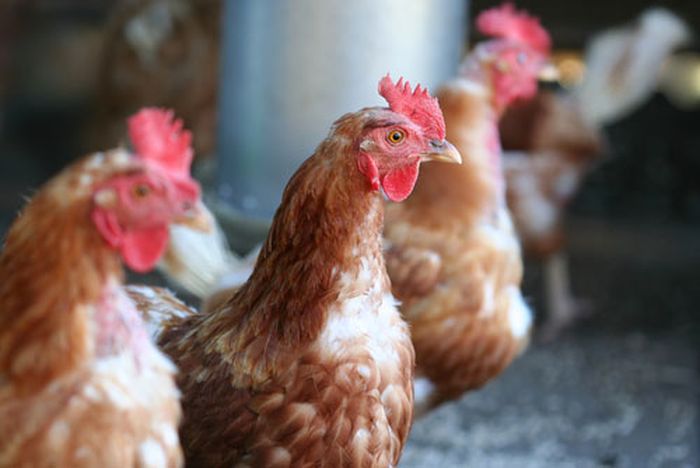US Bird Flu Outbreak in Poultry: Workers at Higher Risk, CDC Warn

The chance that a person will get bird flu in the United States remains very low, but people who come into close contact with infected birds may be at higher risk of infection, officials warned today, in light of the recent U.S. outbreaks of bird flu in poultry.
Since December, more than 40 million birds in the United States have been infected or exposed to harmful bird flu viruses that typically cause severe illness or death in the animals. The outbreak has led authorities to kill millions of birds on poultry farms in the Midwest, in an effort to prevent the spread of the virus through the flocks on those farms.
This outbreak is the first time that birds in the United States have been infected with these particular strains of bird flu — mainly, two strains called H5N2 and H5N8.
Although these strains are not known to cause disease in people, their presence in the United States may increase the likelihood of human infection here, officials at the Centers for Disease Control and Prevention said in a new warning posted today (June 2) on the agency's website.
Other bird flu viruses, such as H5N1 and H7N9, have infected people and caused severe illness. Most human infections with bird flu have occurred after people who did not wear protective equipment had direct contact with infected birds or with surfaces that were contaminated from birds. Others have become infected after visits to a poultry market.
No infections are known to have occurred from eating properly cooked poultry, the CDC said.
Although the risk to the general public is low, "people with close or prolonged, unprotected contact with infected birds or contaminated environments may be at greater risk of infection," the CDC said in an alert to physicians today. [10 Deadly Diseases That Hopped Across Species]
Get the world’s most fascinating discoveries delivered straight to your inbox.
Doctors should consider the possibility of bird flu infection in people with signs of respiratory illness who have had contact with potentially infected birds or their carcasses, the CDC said. This includes people involved in the handling, slaughtering or de-feathering of birds.
People who are exposed to infected birds, including those wearing protective equipment, should also be monitored for symptoms of flu for 10 days after their exposure. If they become sick with a respiratory illness, they should be tested immediately for bird flu, and be given antiviral treatment, the CDC said.
In general, people should avoid unprotected contact with sick or dead birds, or materials contaminated with bird flu viruses, the agency said.
To reduce the risk of infection, poultry workers should wear recommended protective equipment when in direct contact with sick or dead birds, and when going into buildings with sick or dead birds, the CDC said.
Follow Rachael Rettner @RachaelRettner. Follow Live Science @livescience, Facebook & Google+. Original article on Live Science.

Rachael is a Live Science contributor, and was a former channel editor and senior writer for Live Science between 2010 and 2022. She has a master's degree in journalism from New York University's Science, Health and Environmental Reporting Program. She also holds a B.S. in molecular biology and an M.S. in biology from the University of California, San Diego. Her work has appeared in Scienceline, The Washington Post and Scientific American.


